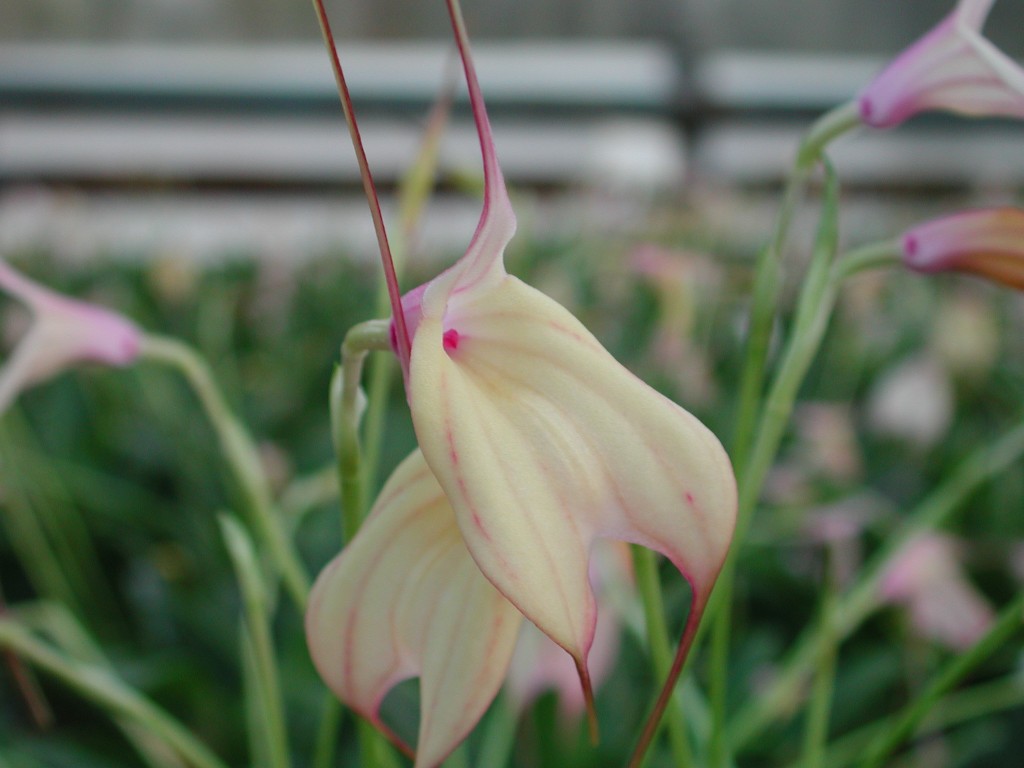(pronounced mas-de-VAL-lee-a)
This genus is chiefly endemic to the cool misty Andes mountains of South America and grow as epiphytes and as terrestrials. They were cultivated by the Aztecs and are now a familiar sight for tourists who visit Machu Picchu in Peru. Today Masdevallias share with Paphiopedilums a cult-like status amongst orchid connoisseurs. Unlike most orchid flowers Masdevallias have insignificant labellums and petals. They have highly distinctive triangular shaped flowers formed by their prominent sepals which frequently extend as long tails. Their solitary flowers can be brilliantly coloured, some almost luminous. Those Masdevallias with such stunning flowers are often pollinated by hummingbirds but have no scent. Many Masdevallia flowers are less flamboyant including those that resemble fungi and have a musky scent to match! These evolved to trick carrion flies which often lay their eggs in fungi into visiting and in turn pollinating the flower. The closely related genus Dracula has even more intricate and sinister flower forms to enthral growers. Masdevallias are not recommended for beginners but are a fascinating group worth striving to achieve success with.
Temperature
Cool. Night temperatures of between 10° and 12°C with a daytime rise of about 10°C..
Light
Low to Moderate (bright indirect). Too much light causes yellow banding along their succulent leaves.
Watering
Moderate all year but the growing media must be allowed to almost dry out between watering with the caveat that a full dry out will kill the plant as they have insignificant pseudobulbs in which to store water. Masdevallias must also have high humidity and a damp gravel filled tray is advisable for standing the pot on. Avoid spraying with water as they are prone to fungal spotting and give good ventilation all year.
Feeding
Low but frequent.
Did you know…
The national flower of Peru is the Masdevallia veitchiana. The blossom is fiery orange covered with tiny magenta hairs which catch the light and so when seen from a different viewing angle the flower appears iridescent.

